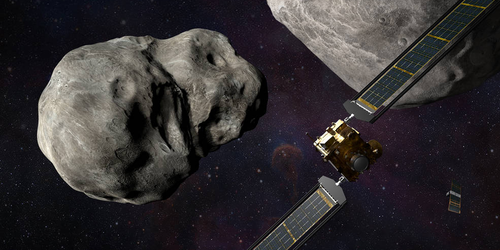For the DART team, which includes scientists from space agencies and research institutions around the world, the test has two parts: hitting Dimorphous and then deflecting its path. To hit its target, DART will need to autonomously identify the moonlet asteroid and then self-adjust its trajectory to keep on target. “[DART] won’t be able to distinguish between Didymous and Dimorphous until the last hour of the mission,” Chalbot said. At that time, the spacecraft will be too far from Earth for any course-adjusting signals to reach it before the countdown ends. Instead, DART will have to continuously snap images of the asteroids and then use algorithms onboard its computer to interpret those images and make the course adjustments needed to ensure an intercept.







